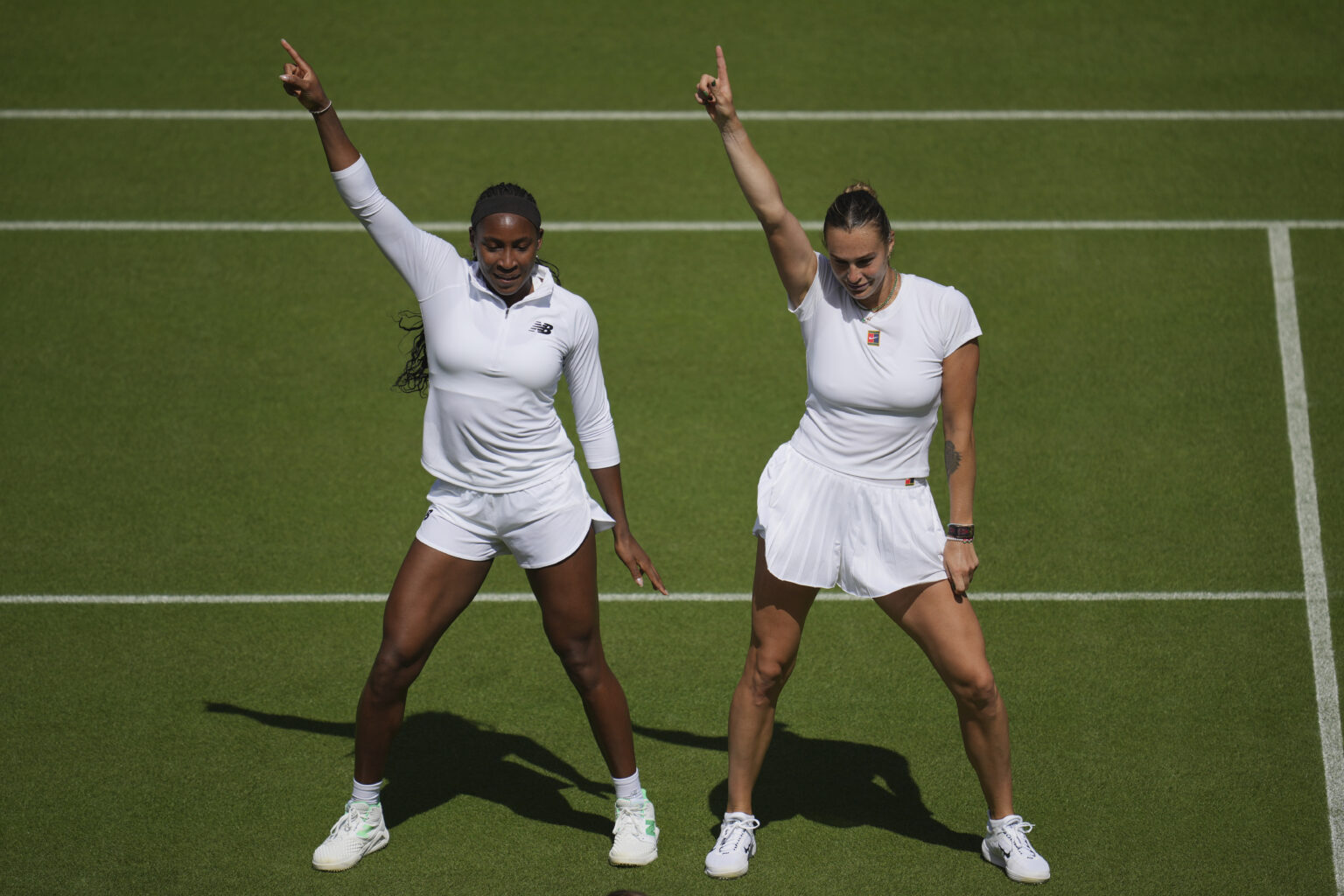A New Chapter in Women’s Tennis: The Emergence of a Modern Rivalry
WIMBLEDON, England – As the third major tournament of the tennis calendar unfolds in 2025, the sport witnesses a refreshing shift in its narrative. The top two women’s players, Aryna Sabalenka and Coco Gauff, have opted for harmony over hostility, symbolically sealing their reconciliation with a playful TikTok dance. This gesture marks a significant departure from the usual tension that often accompanies high-stakes rivalries, signaling a new era of sportsmanship and camaraderie.
Bridging Divides with a Digital Peace Offering
Rather than entering Wimbledon with lingering animosity from their recent clash at the French Open, Sabalenka and Gauff chose to publicly demonstrate unity. Over the weekend, they shared two TikTok videos shot at the All England Club. The first featured both athletes on the historic grounds, accompanied by the caption: “The olive branch was extended and accepted! We’re good, so you should be too.” The second showcased them dancing together on Centre Court, with the caption: “TikTok dances have a way of bringing people together.” Their message resonated widely, earning endorsement from Wimbledon’s official social media channels, emphasizing the importance of sportsmanship and mutual respect.
A Rivalry Reimagined for the Modern Age
This act of reconciliation offers fans a glimpse into a potential new chapter for women’s tennis-a rivalry rooted not in personal animosity but in mutual respect and competitive spirit. Gauff, aiming to emulate Serena Williams’ feat of winning both the French Open and Wimbledon in the same year-a feat last achieved by Williams in 2015-alongside Sabalenka, who is also chasing her maiden Wimbledon crown, symbolize the sport’s evolving narrative.
Historically, women’s tennis has lacked the intense rivalries that have historically energized the men’s game. The last significant rivalry comparable to the legendary duels of Navratilova and Evert or Sampras and Agassi was between Williams and Henin, who faced off 14 times from 2001 to 2010, including seven Grand Slam encounters. Today, fans yearn for a rivalry that can ignite the same passion and excitement.
The Significance of Rivalries in Tennis
“Rivalries are the heartbeat of tennis,” explains Pam Shriver, a former professional and current ESPN analyst. “They create narratives that draw fans in and elevate the sport. Without them, the game feels somewhat hollow.” She notes that while the men’s tour has successfully transitioned from the dominance of the Big Three-Federer, Nadal, Djokovic-to new stars like Carlos Alcaraz and Jannik Sinner, women’s tennis has struggled to find a comparable compelling rivalry.
The recent resurgence of interest is largely driven by the competitive encounters between Gauff and Sabalenka, who have met 11 times, with Gauff holding a slight edge at 6-5. Notably, three of their recent matches have been in Grand Slam finals or semifinals, heightening anticipation for future clashes. Their contrasting personalities-Gauff’s composed intelligence and Sabalenka’s fiery intensity-add layers of intrigue, making their matchups particularly captivating.
The Cultural and Media Impact
The controversy at the French Open, where Sabalenka’s comments post-match drew criticism, especially from supporters of Gauff, underscored the racial and cultural undertones that often accompany sports rivalries. Many observers pointed out that the backlash might have been harsher had Gauff been the one to make similar remarks. Gauff, who was the highest-paid female athlete in 2024 with endorsements totaling over $21 million, exemplifies the new generation of tennis stars who are not only competitive but also influential figures.
The rivalry’s infancy means that their head-to-head record is still close-Gauff leads 6-5-but the stakes are rising as they continue to meet in high-profile matches. Their contrasting demeanors and playing styles promise to produce compelling tennis, reminiscent of the legendary duels of the past.
The Future of Women’s Tennis Rivalries
Tennis analyst Mary Carillo emphasizes that a sustained rivalry between Gauff and Sabalenka could become one of the sport’s defining narratives. “When both are at their peak, matches are decided by the smallest of margins,” she notes. “Aryna’s intensity and belief in her game, combined with Coco’s strategic intelligence, make for a rivalry that could captivate audiences for years.”
While Gauff has expressed concern over the toxicity of online criticism directed at Sabalenka, both players seem committed to maintaining a respectful relationship. Their recent practice sessions and public statements suggest that they are focused on their upcoming matches-Sabalenka against Carson Branstine and Gauff against Dayana Yastremska-without letting distractions derail their focus.
Rivalries as the Lifeblood of Tennis
Former players like Shriver believe that rivalries are essential for the sport’s vitality. “Without compelling rivalries, tennis loses its edge,” she asserts. “The Gauff-Sabalenka storyline is just beginning, but it already has the ingredients to become something special-intense, respectful, and fiercely competitive.”
In conclusion, the evolving relationship between Gauff and Sabalenka signals a promising shift in women’s tennis. Their ability to balance fierce competition with mutual respect could redefine the sport’s narrative, inspiring a new generation of players and fans alike. As the tournament progresses, all eyes will be on these two stars, eager to see if their rivalry will flourish into one of the most memorable in tennis history.

